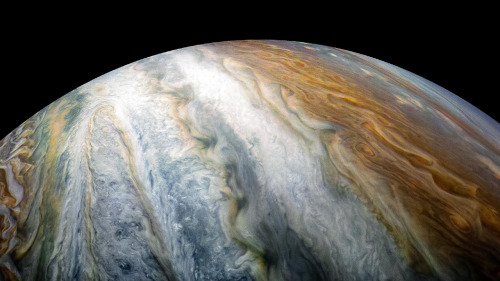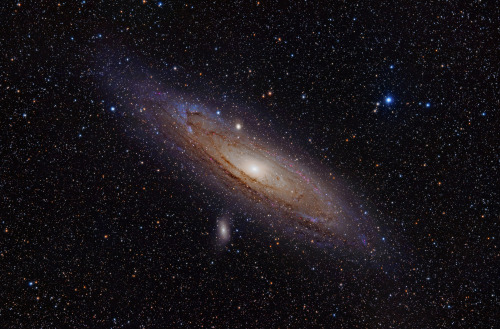Amanktyr - Space Lover

More Posts from Amanktyr and Others

- 💙Join our Space family💙 - - Kindly follow @_space___lover_ for more interesting posts in future. • Double TAP ❤️ for more.... Follow @_space___lover_ to Learn New Amazing Stuff Everyday - - Do you agree with this post? 💯 ❗️Follow us for more Space Science Facts❗️ @_space___lover_ @_space___lover_ @_space___lover_ @_space___lover_ @_space___lover_ Double tap ❤️ Share More👇 Follow us for more 🌍 -tag:-) #nasa #galaxies #spacetravel #universes #earthplanet #nasabeyond #spacescience #futures #alieninvasion #blackhole #humanscale #astrogeekz #dangeroustour #himalayas #_space___lover_ #plutoretrograde #tomcruire #physicsisfun #theoreticalphysics https://www.instagram.com/p/CC6DDQpHdu9/?igshid=k2c3nhye57bm

A dwarf planet is a planetary-mass object that does not dominate its region of space (as a true or classical planet does) and is not a satellite. That is, it is in direct orbit of the Sun and is massive enough to be plastic – for its gravity to maintain it in a hydrostatically equilibrious shape (usually a spheroid) – but has not cleared the neighborhood around its orbit of other material. The prototype dwarf planet is Pluto. 💙Join our Space family💙 - - Kindly follow @_space___lover_ for more interesting posts in future. • Double TAP ❤️ for more.... Follow @_space___lover_ to Learn New Amazing Stuff Everyday - - Do you agree with this post? 💯 ❗️Follow us for more Space Science Facts❗️ @_space___lover_ @_space___lover_ @_space___lover_ @_space___lover_ @_space___lover_ Double tap ❤️ Share More👇 Follow us for more 🌍 -tag:-) #nasa #galaxies #spacetravel #universes #earthplanet #nasabeyond #spacescience #futures #alieninvasion #elonmusk #humanscale #astrogeekz #dangeroustour #himalayas #_space___lover_ #plutoretrograde #tomcruire #physicsisfun #theoreticalphysics https://www.instagram.com/p/CDDkgq1H2Am/?igshid=1wgsau9tkbds6
Falling Into Jupiter

Twenty-five years ago, an object roughly the size of an oven made space history when it plunged into the clouds of Jupiter, the largest planet in our solar system. On Dec. 7, 1995, the 750-pound Galileo probe became the first probe to enter the gas giant. Traveling at a blistering speed of 106,000 miles per hour, the probe’s protective heat shield experienced temperatures as hot as the Sun’s surface generated by friction during entry. As the probe parachuted through Jupiter’s dense atmosphere, its science instruments made measurements of the planet’s chemical and physical makeup. The probe collected data for nearly an hour before its signal was lost. Its data was transmitted to Earth via the Galileo spacecraft, an orbiter that carried the probe to Jupiter and stayed within contact during the encounter. Learn more about the mission.
The Galileo probe was launched to space aboard space shuttle Atlantis in 1989

The probe consisted of a descent module and a protective deceleration module

The probe traveled to Jupiter attached to the Galileo spacecraft

The probe was released from the spacecraft in July 1995

The probe entered Jupiter’s atmosphere five months later on Dec. 7, 1995

Parachutes were deployed to slow the probe’s descent

The probe collected science data for 58 minutes as it fell into the planet’s atmosphere

The Galileo probe was managed by NASA’s Ames Research Center in California’s Silicon Valley.
Make sure to follow us on Tumblr for your regular dose of space: http://nasa.tumblr.com

Space - A Pair of Spiral Galaxies ARP 273 from Hubble Telescope Art Print . AMuseum Quality Art Print of Images of a Pair of Spiral Galaxies known as ARP 273 images taken from the Hubble Space Telescope. This photogenic pair of spiral galaxies are in the Andromeda Constellation and is located roughly 300 million light years from Earth. The image shows a tenuOus tidal bridge of material between the two galaxies that are separated from each other by tens of thousands of light years, while in this picture the galaxies look like they are almost touching each other, due to the huge distances of space. The larger of the spiral galaxies is known as UGC 1810 and has a disk that is distorted into a rose like shape by the gravitational tidal pull of the companion galaxy below it, which is known as UGC 1813.The swath of blue jewel like points across the top is the combined light from clusters of intensely bright and hot young blue stars. These massive stars glow fiercely in ultraviolet light. The large galaxy has 5 times the mass as the smaller neighbor. The Small Spiral Galaxy shows distinct signs of intense star formation at its nucleus, perhaps triggered by the encounter with the larger companion galaxy. At Fine Art Prints of Distinction we painstakingly repair the original files of these old paintings and print them using premium quality inkS and paper. The end result is a beautiful, archival reproduction print that will last in your home for generations and at a low cost so anyone can now have great artworks hanging in their home or business. Brandywine General Store is proud to offer for sale a Premium Fine Art Print made from the photograph entitled a Pair of Spiral Galaxies known as ARP 273 images taken from the Hubble Space Telescope. Inventory #16 - Outer Space Art Prints (at Hubble Space Telescope) https://www.instagram.com/p/CEk0_3qjMIa/?igshid=8aqtpxaqcles


Jupiter's aurora is a very powerful source of energy. It produces much more power (about a million MegaWatts) than the Earth's aurora (about 1000 MegaWatts). For comparison, a large city uses about 10,000 MegaWatts. This energy can sometimes have a significant impact on the atmosphere. ⠀ Aurora on Earth usually shine for a few hours at most. Aurora on Saturn can last for days! These "curtains of light" sometimes rise 1,200 miles (2,000 km) above the cloud tops near Saturn's poles. If you were on Saturn, the aurora would look like a faint red glow. Most of the energy in Saturn's aurora is not in the form of visible light, though. Instead, they mostly glow in ultraviolet (UV) wavelengths 🌌 🔭 Which one is your favorite 🔭 Do you love Auroras ❤ Credit @theourspace https://www.instagram.com/p/CDoSvf8DQwf/?igshid=n1zr1mtgm5bq

✨𝗟𝗶𝗳𝗲 𝗼𝗳 𝘀𝘁𝗮𝗿💫 ❣️Join our Space family❣️ - - Kindly follow @_space___lover_ for more interesting posts in future. • Double TAP ❤️ for more.... Follow @_space___lover_ to Learn New Amazing Stuff Everyday - - Do you agree with this post? 💯 ❗️Follow us for more Space Science Facts❗️ @_space___lover_ @_space___lover_ @_space___lover_ @_space___lover_ @_space___lover_ Double tap ❤️ Share More👇 Follow us for more 🌍 -tag:-) #nasa #galaxies #spacetravel #universes #earthplanet #nasabeyond #spacescience #futures #alieninvasion #elonmusk #lifeofstar #stars #humanscale #astrogeekz #dangeroustour #himalayas #_space___lover_ #plutoretrograde #tomcruire #physicsisfun #theoreticalphysics (at Space) https://www.instagram.com/p/CDP5G61nSLP/?igshid=1owjphlmhb6ls

Andromeda


2021 June 29
Orion Nebula: The Hubble View Image Credit: NASA, ESA, Hubble Legacy Archive; Processing: Francisco Javier Pobes Serrano
Explanation: Few cosmic vistas excite the imagination like the Orion Nebula. Also known as M42, the nebula’s glowing gas surrounds hot young stars at the edge of an immense interstellar molecular cloud only 1,500 light-years away. The Orion Nebula offers one of the best opportunities to study how stars are born partly because it is the nearest large star-forming region, but also because the nebula’s energetic stars have blown away obscuring gas and dust clouds that would otherwise block our view - providing an intimate look at a range of ongoing stages of starbirth and evolution. The featured image of the Orion Nebula is among the sharpest ever, constructed using data from the Hubble Space Telescope. The entire Orion Nebula spans about 40 light years and is located in the same spiral arm of our Galaxy as the Sun.
∞ Source: apod.nasa.gov/apod/ap210629.html

🚀 🅶🆁🅴🅴🆃 🅰🅻🅻 🆂🅿🅰🅲🅴 🅻🅾🆅🅴🆁🆂.🛸 💝 𝗜 𝗹𝗼𝘃𝗲 𝗮𝘀𝘁𝗿𝗼𝗻𝗼𝗺𝘆 .🥰 🌍𝙀𝙖𝙧𝙩𝙝 𝙞𝙨 𝙣𝙤𝙩 𝙢𝙮 𝙝𝙤𝙢𝙚. 🌎 🆕 𝐍𝐞𝐰 𝐩𝐨𝐬𝐭 𝐞𝐯𝐞𝐫𝐲 𝐝𝐚𝐲🔄
230 posts